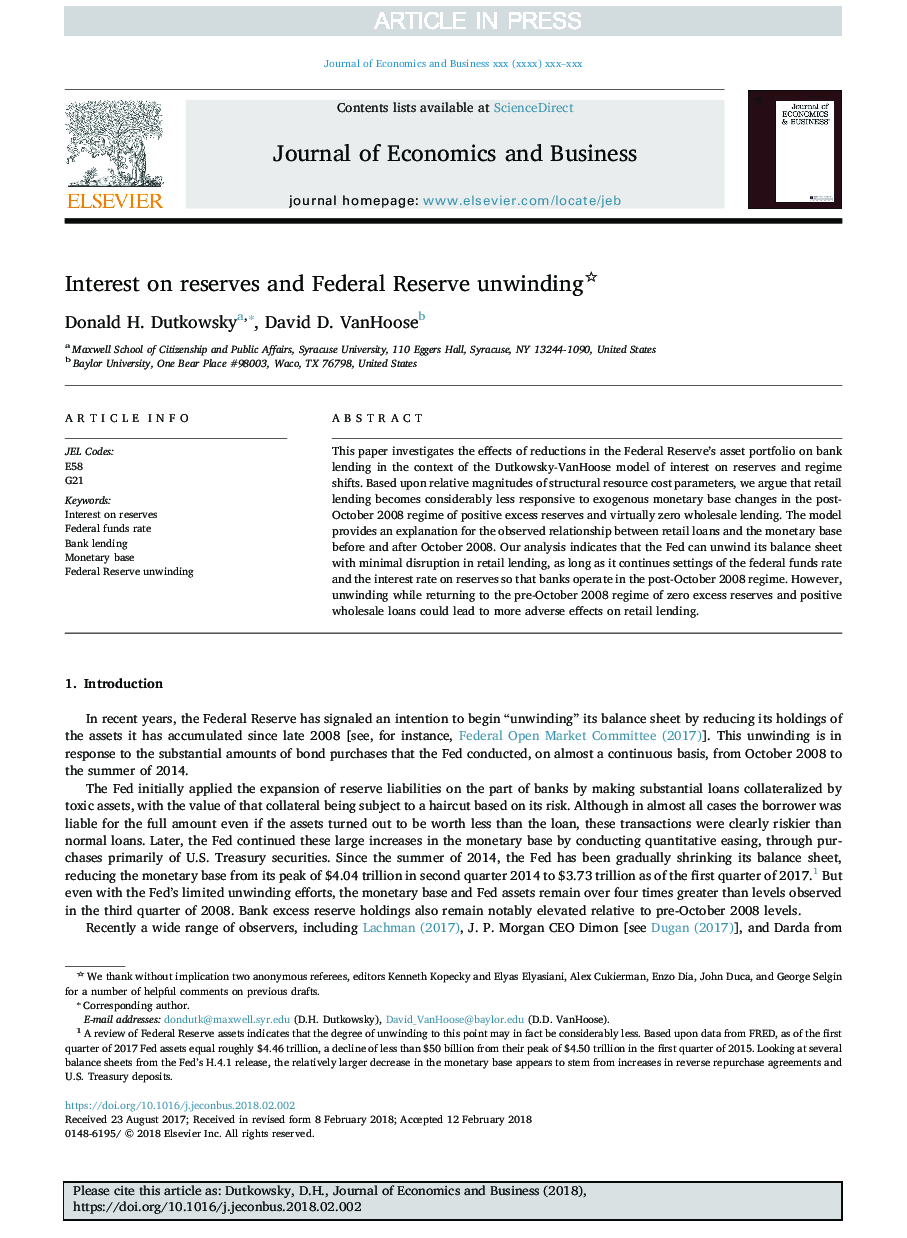| Article ID | Journal | Published Year | Pages | File Type |
|---|---|---|---|---|
| 7360127 | Journal of Economics and Business | 2018 | 11 Pages |
Abstract
This paper investigates the effects of reductions in the Federal Reserve's asset portfolio on bank lending in the context of the Dutkowsky-VanHoose model of interest on reserves and regime shifts. Based upon relative magnitudes of structural resource cost parameters, we argue that retail lending becomes considerably less responsive to exogenous monetary base changes in the post-October 2008 regime of positive excess reserves and virtually zero wholesale lending. The model provides an explanation for the observed relationship between retail loans and the monetary base before and after October 2008. Our analysis indicates that the Fed can unwind its balance sheet with minimal disruption in retail lending, as long as it continues settings of the federal funds rate and the interest rate on reserves so that banks operate in the post-October 2008 regime. However, unwinding while returning to the pre-October 2008 regime of zero excess reserves and positive wholesale loans could lead to more adverse effects on retail lending.
Related Topics
Social Sciences and Humanities
Business, Management and Accounting
Strategy and Management
Authors
Donald H. Dutkowsky, David D. VanHoose,
